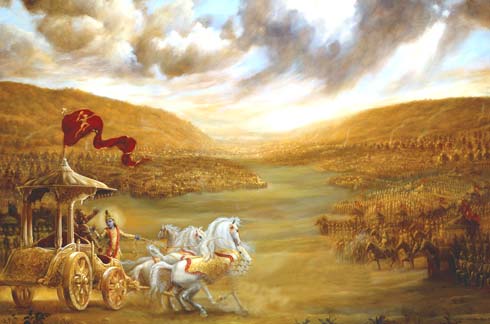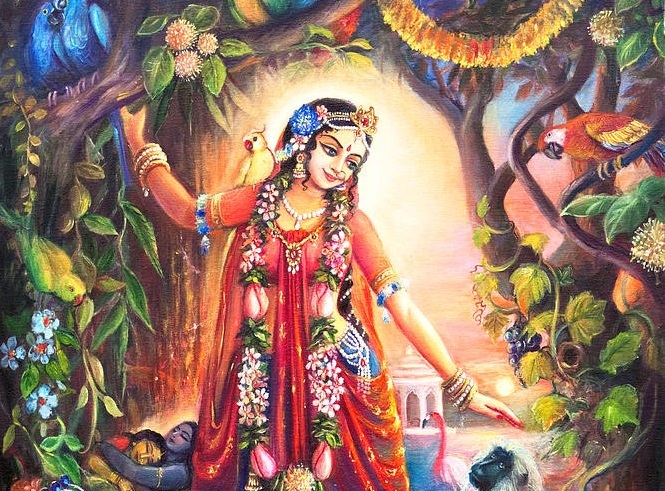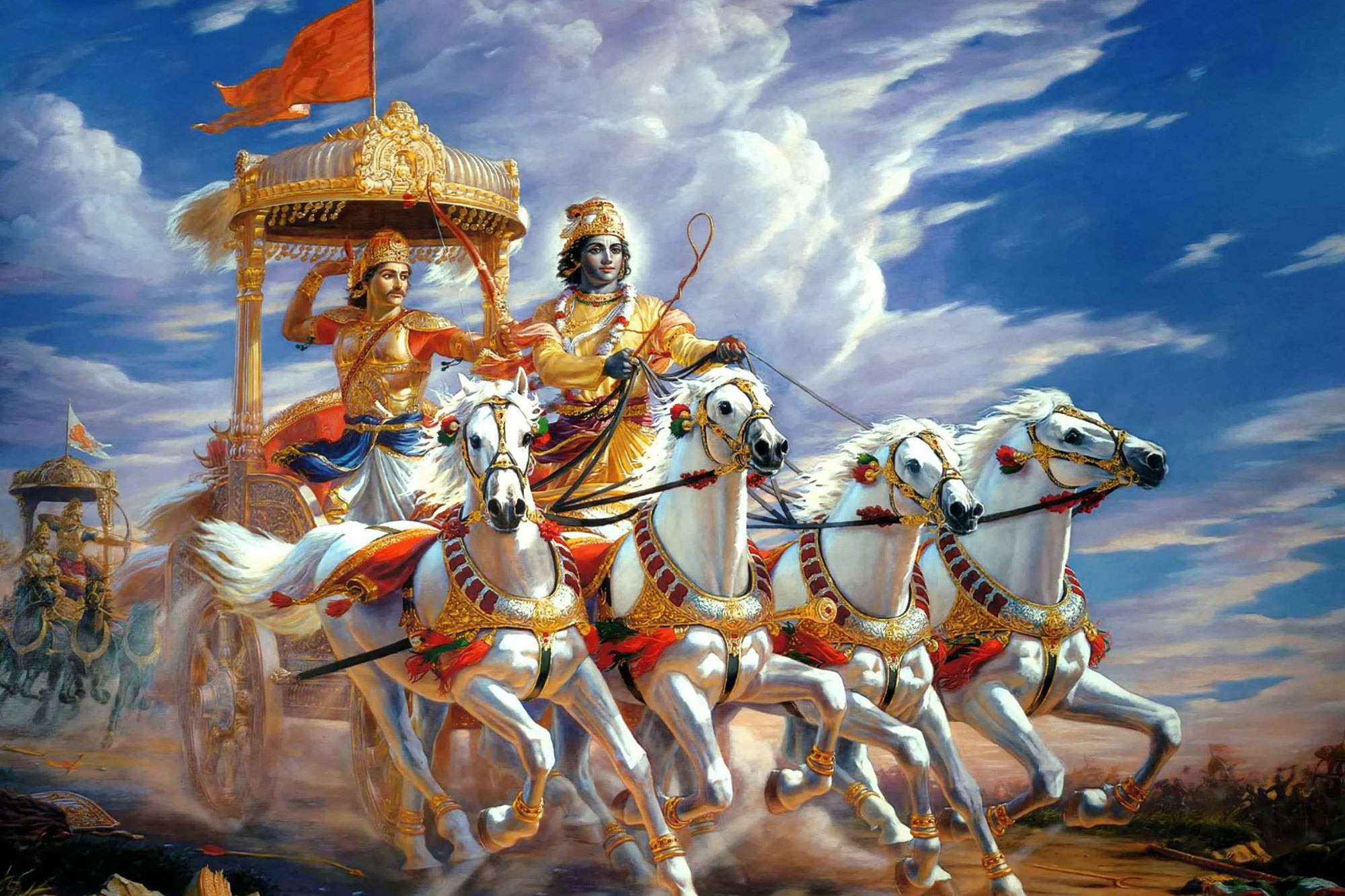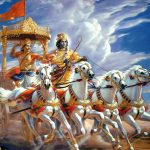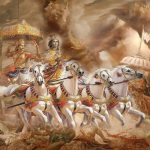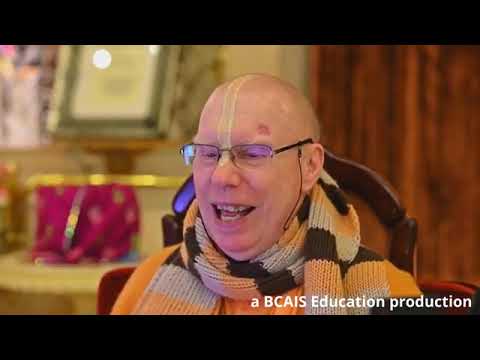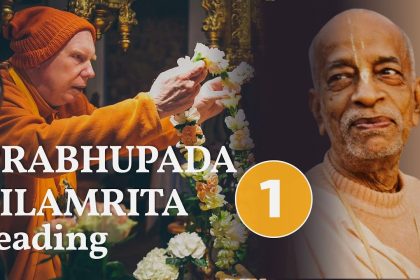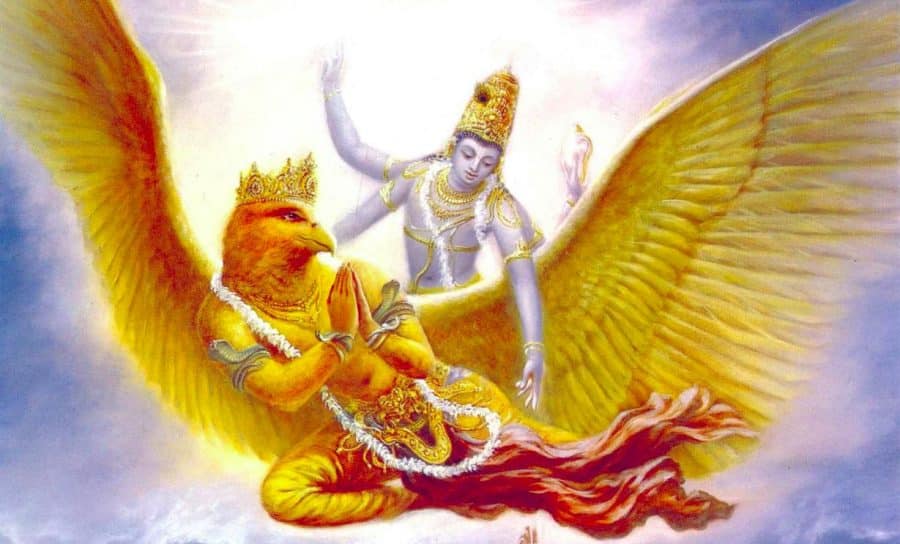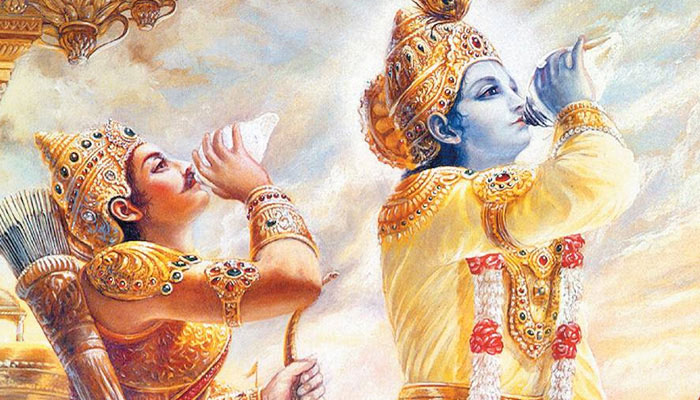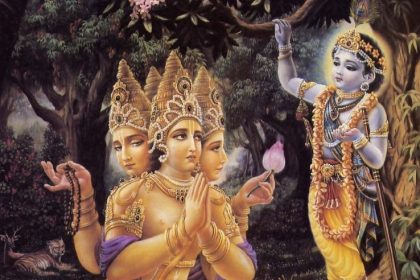The Five Basic Truths of Bhagavad-Gita
Īśvara (the Supreme Lord), jīva (the living entity), prakṛti (nature), kāla (eternal time) and karma (activity) are all explained in the Bhagavad-gītā. Out of these five, the Lord, the living entities, material nature and time are eternal. The manifestation of prakṛti may be temporary, but it is not false. Some philosophers say that the manifestation of material nature is false, but according to the philosophy of Bhagavad-gītā or according to the philosophy of the Vaiṣṇavas, this is not so. The manifestation of the world is not accepted as false; it is accepted as real, but temporary. It is likened unto a cloud which moves across the sky, or the coming of the rainy season, which nourishes grains. As soon as the rainy season is over and as soon as the cloud goes away, all the crops which were nourished by the rain dry up. Similarly, this material manifestation takes place at a certain interval, stays for a while and then disappears. Such are the workings of prakṛti. But this cycle is working eternally. Therefore prakṛti is eternal; it is not false. The Lord refers to this as “My prakṛti.” This material nature is the separated energy of the Supreme Lord, and similarly the living entities are also the energy of the Supreme Lord, although they are not separated but eternally related. So the Lord, the living entity, material nature and time are all interrelated and are all eternal. However, the other item, karma, is not eternal. The effects of karma may be very old indeed. We are suffering or enjoying the results of our activities from time immemorial, but we can change the results of our karma, or our activity, and this change depends on the perfection of our knowledge. We are engaged in various activities. Undoubtedly we do not know what sort of activities we should adopt to gain relief from the actions and reactions of all these activities, but this is also explained in the Bhagavad-gītā.
The position of īśvara, the Supreme Lord, is that of supreme consciousness. The jīvas, or the living entities, being parts and parcels of the Supreme Lord, are also conscious. Both the living entity and material nature are explained as prakṛti, the energy of the Supreme Lord, but one of the two, the jīva, is conscious. The other prakṛti is not conscious. That is the difference. Therefore the jīva-prakṛti is called superior because the jīva has consciousness which is similar to the Lord’s. The Lord’s is supreme consciousness, however, and one should not claim that the jīva, the living entity, is also supremely conscious. The living being cannot be supremely conscious at any stage of his perfection, and the theory that he can be so is a misleading theory. Conscious he may be, but he is not perfectly or supremely conscious.
The distinction between the jīva and the īśvara will be explained in the Thirteenth Chapter of Bhagavad-gītā. The Lord is kṣetra-jña, conscious, as is the living being, but the living being is conscious of his particular body, whereas the Lord is conscious of all bodies. Because He lives in the heart of every living being, He is conscious of the psychic movements of the particular jīvas. We should not forget this. It is also explained that the Paramātmā, the Supreme Personality of Godhead, is living in everyone’s heart as īśvara, as the controller, and that He is giving directions for the living entity to act as he desires. The living entity forgets what to do. First of all he makes a determination to act in a certain way, and then he is entangled in the actions and reactions of his own karma. After giving up one type of body, he enters another type of body, as we take off and put on clothes. As the soul thus migrates, he suffers the actions and reactions of his past activities. These activities can be changed when the living being is in the mode of goodness, in sanity, and understands what sort of activities he should adopt. If he does so, then all the actions and reactions of his past activities can be changed. Consequently, karma is not eternal. Therefore we stated that of the five items (īśvara, jīva, prakṛti, time and karma) four are eternal, whereas karma is not eternal.
The supreme conscious īśvara is similar to the living entity in this way: both the consciousness of the Lord and that of the living entity are transcendental. It is not that consciousness is generated by the association of matter. That is a mistaken idea. The theory that consciousness develops under certain circumstances of material combination is not accepted in the Bhagavad-gītā. Consciousness may be pervertedly reflected by the covering of material circumstances, just as light reflected through colored glass may appear to be a certain color, but the consciousness of the Lord is not materially affected. Lord Kṛṣṇa says, mayādhyakṣeṇa prakṛtiḥ [Bg. 9.10]. When He descends into the material universe, His consciousness is not materially affected. If He were so affected, He would be unfit to speak on transcendental matters as He does in the Bhagavad-gītā. One cannot say anything about the transcendental world without being free from materially contaminated consciousness. So the Lord is not materially contaminated. Our consciousness, at the present moment, however, is materially contaminated. The Bhagavad-gītā teaches that we have to purify this materially contaminated consciousness. In pure consciousness, our actions will be dovetailed to the will of īśvara, and that will make us happy. It is not that we have to cease all activities. Rather, our activities are to be purified, and purified activities are called bhakti. Activities in bhakti appear to be like ordinary activities, but they are not contaminated. An ignorant person may see that a devotee is acting or working like an ordinary man, but such a person with a poor fund of knowledge does not know that the activities of the devotee or of the Lord are not contaminated by impure consciousness or matter. They are transcendental to the three modes of nature. We should know, however, that at this point our consciousness is contaminated.


